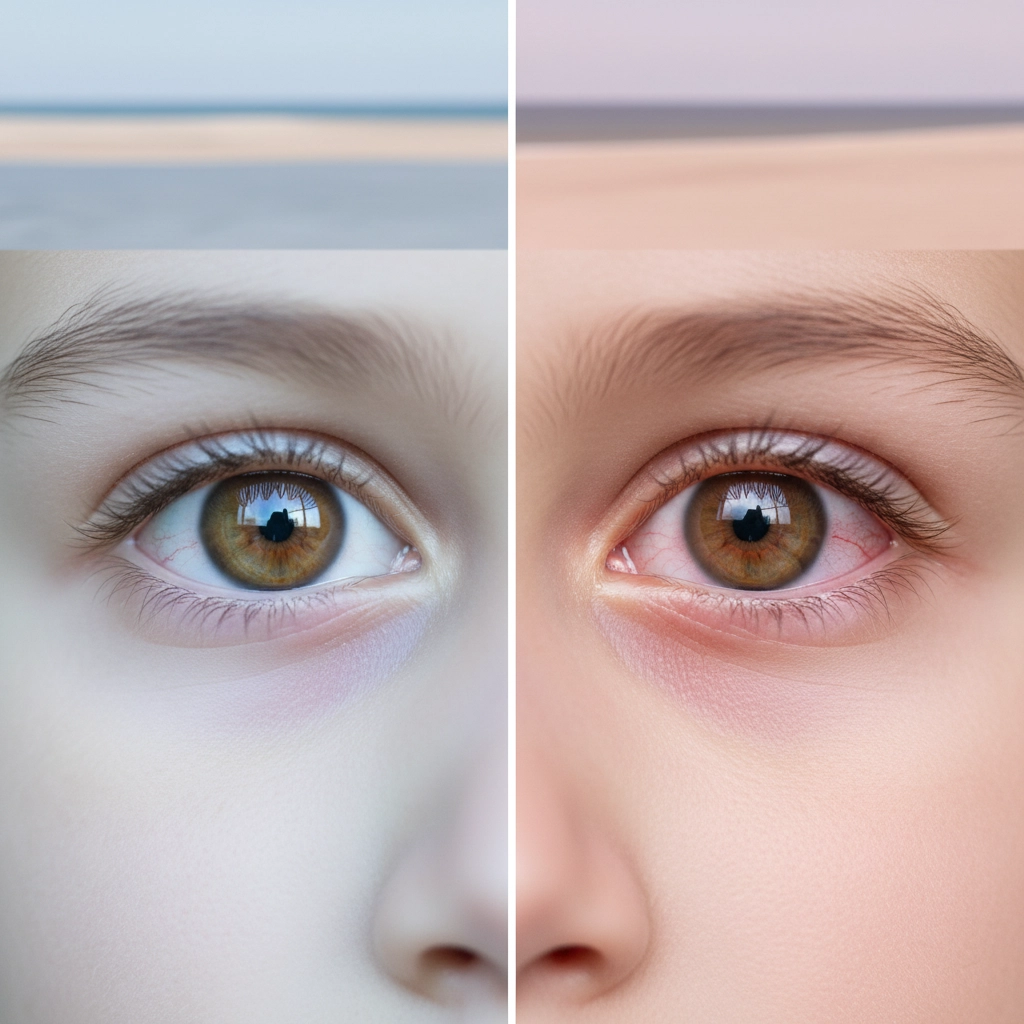
Children ages 8-18 average 7.5 hours of daily screen time for entertainment purposes alone. This figure excludes educational computer use and homework activities. The accumulated exposure equals 114 full days of screen interaction annually.
Current Screen Time Statistics
Daily Usage Patterns:
Entertainment screen time: 7.5 hours average
Educational screen time: Additional 2-3 hours
Total daily exposure: 9-10 hours minimum
Annual screen exposure: 3,000+ hours
Digital device usage has increased 300% among children since 2010. Mobile devices, tablets, computers, and gaming systems contribute to cumulative exposure levels.
Vision Problems from Extended Screen Use
Eye Strain and Fatigue
Extended screen use reduces blinking frequency by 60%. Normal blinking maintains tear film distribution across the eye surface. Reduced blinking causes:
Dry eye symptoms
Blurred vision episodes
Frequent headaches
Eye discomfort and pain
Difficulty maintaining focus
Children experiencing asthenopia (eye fatigue) report decreased interest in reading activities. Symptoms include eye pain, tiredness, and concentration difficulties.

Digital Eye Strain Symptoms
Immediate Effects:
Burning or itching eyes
Watery or dry eyes
Light sensitivity
Difficulty focusing
Neck and shoulder tension
Progressive Symptoms:
Persistent headaches
Vision changes
Sleep disruption
Behavioral changes related to visual discomfort
Myopia Development and Progression
Screen time correlation with myopia (nearsightedness) development shows significant statistical relationships. Children with excessive screen exposure demonstrate accelerated myopia progression rates.
Myopia Warning Signs:
Difficulty seeing classroom whiteboards
Squinting at distant objects
Moving closer to television screens
Complaints of blurred distance vision
Frequent eye rubbing
Research indicates myopia progression accelerates during childhood and adolescence. Early intervention through professional eye care services prevents long-term complications.
Computer Vision Syndrome in Children
Computer Vision Syndrome affects 70% of individuals using digital devices regularly. Children experience symptoms more severely due to developing visual systems.
Primary Contributing Factors:
Screen positioning inappropriate for child height
Poor lighting conditions
Uncorrected vision problems
Extended usage without breaks
Blue light exposure

Focus Flexibility Loss
Prolonged close-focus activities reduce accommodation flexibility. The eye's focusing mechanism becomes less responsive to distance changes. Children may experience temporary accommodation spasms requiring professional evaluation.
Sleep and Circadian Rhythm Disruption
Blue-violet light emission from digital devices suppresses melatonin production. Disrupted sleep cycles affect:
Growth hormone production
Learning and memory consolidation
Immune system function
Behavioral regulation
Sleep quality directly impacts eye health and visual development during childhood years.
Prevention and Management Strategies
20-20-20 Rule Implementation
Every 20 minutes, direct focus to objects 20 feet away for 20 seconds minimum. This practice:
Relaxes focusing muscles
Stimulates natural blinking
Reduces accommodation stress
Provides visual system rest periods
Set timers or use applications to remind children of break intervals.
Environmental Modifications
Screen Positioning Guidelines:
Top of screen at or below eye level
Distance: arm's length minimum
Angle: slight downward gaze (10-20 degrees)
Reduce glare through proper lighting
Lighting Recommendations:
Ambient room lighting equal to screen brightness
Eliminate reflections on screen surfaces
Position light sources perpendicular to screen
Use adjustable desk lamps for task lighting

Outdoor Activity Requirements
Natural daylight exposure supports healthy eye development. Research demonstrates correlation between outdoor time and reduced myopia risk.
Recommended Outdoor Exposure:
Minimum 2 hours daily
Natural light without direct sun exposure
Physical activities requiring distance vision
Vitamin D production benefits
Professional Eye Care Services
Comprehensive Eye Examination Components
Standard vision screenings detect basic visual acuity problems only. Comprehensive examinations evaluate:
Focusing system function
Eye coordination abilities
Peripheral vision assessment
Eye pressure measurements
Retinal health evaluation
Binocular vision testing
Examination Frequency:
Annual examinations for school-age children
Bi-annual examinations for high-risk cases
Immediate evaluation for symptom development
Family Eye Care St Johns FL Services
Local optometry services provide specialized pediatric eye care. Professional evaluation identifies underlying conditions contributing to screen-time related symptoms.
Available Services:
Pediatric vision therapy
Myopia control treatments
Computer vision syndrome management
Protective eyewear fitting
Educational consultations

Warning Signs Requiring Professional Attention
Schedule appointments for:
Persistent headaches after screen use
Frequent eye rubbing or blinking
Difficulty with homework or reading
Squinting at distant objects
Complaints of double vision
Academic performance decline
Children referred to other specialists for attention or learning difficulties may have undiagnosed vision problems. Comprehensive eye examinations identify vision-related learning challenges.
Screen Time Management Guidelines
Age-Appropriate Usage Limits
Recommended Daily Limits:
Ages 2-5: 1 hour high-quality programming
Ages 6+: Consistent limits based on family needs
Educational content prioritized over entertainment
Co-viewing with parents when possible
Technology-Free Zones
Establish areas and times without digital devices:
Bedrooms during sleep hours
Dining areas during meals
Study spaces for homework completion
Family interaction periods
Alternative Activities
Vision-Friendly Activities:
Outdoor sports and games
Art and craft projects
Board games and puzzles
Physical books and magazines
Musical instrument practice

Long-Term Vision Health Considerations
Myopia Progression Prevention
Early intervention slows myopia progression throughout childhood. Professional management includes:
Specialized contact lens fittings
Atropine therapy protocols
Orthokeratology treatments
Environmental modification recommendations
Technology Integration Balance
Complete screen elimination remains unrealistic in modern educational environments. Balanced approaches combine necessary technology use with protective measures.
Contact Information for Local Eye Care
Professional eye care services in St Johns provide comprehensive family vision care. Schedule appointments for pediatric eye examinations and screen-time related consultations.
Regular professional monitoring ensures healthy visual development throughout childhood and adolescence. Early intervention prevents long-term complications associated with excessive screen exposure.
Screen time management requires consistent family commitment combined with professional guidance. Establishing healthy visual habits during childhood provides lifelong benefits for eye health and visual performance.









